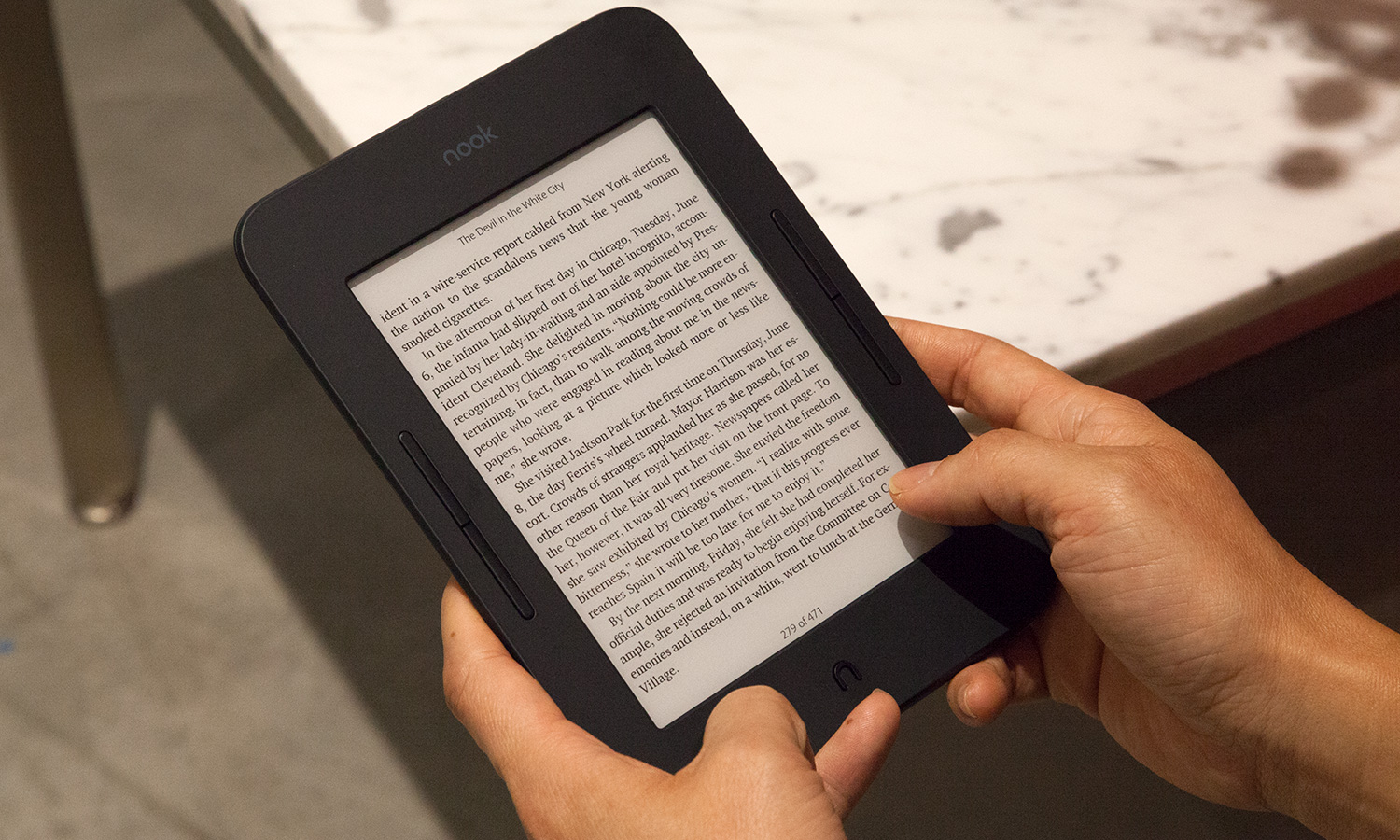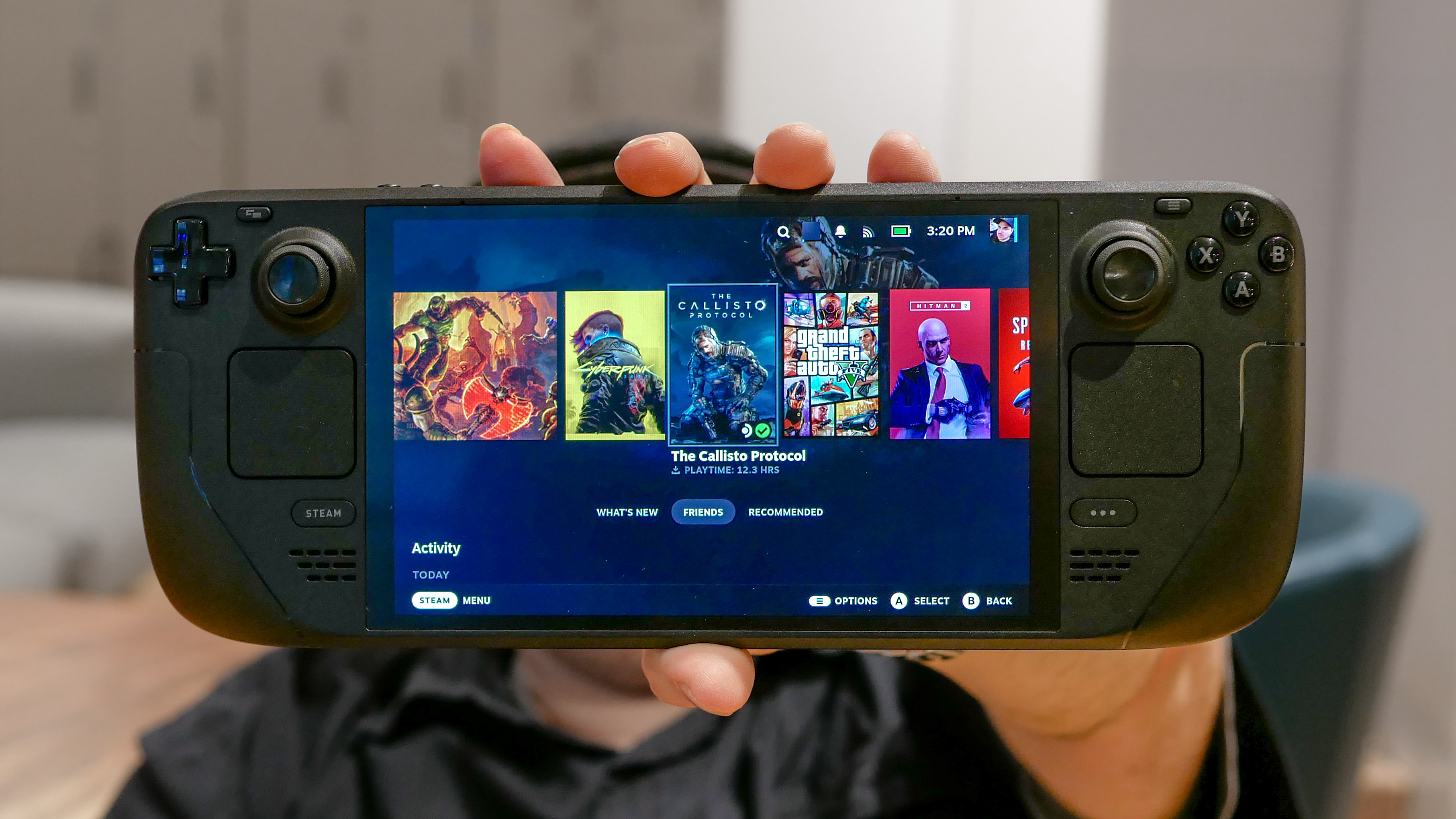Tom's Guide Verdict
The Nook GlowLight 3 is functional, but it suffers from a half-baked interface, a general lack of speed and some features that just don't work.
Pros
- +
Crisp screen
- +
Long battery life
- +
Inventive Night Mode
Cons
- -
Laggy, convoluted interface
- -
Broken features
- -
Fewer bells and whistles than previous models
Why you can trust Tom's Guide
When the Nook first launched in 2009, I was working at a Barnes & Noble bookshop. Because I was young and good with computers, my manager put me in charge of the Nook stand in front of the store. I was legitimately excited about the product. It wasn't perfect by any means, and the Kindle still beat it in many respects (learn how at our Best Kindles page), but it was a fundamentally different approach to an e-reader.
Everything about the Nook was open. From its Android OS, to its embrace of the .EPUB file format, to its compatibility with local libraries, this was a machine that wanted to take reading to the next level, even if it didn't fully succeed.
By contrast, I get the distinct feeling that no one is very excited about the Nook GlowLight 3 ($120) — including Barnes & Noble. The new E Ink reader launched in November 2017, and it came and left the popular consciousness the very same week. Could the GlowLight 3 really be that bad?
Credit where it's due: The GlowLight 3 is a beautiful device.
The short answer is no, but it is that boring. The GlowLight 3 has a high-resolution screen, excellent battery life, subtle lighting options and helpful physical buttons. But it suffers from a half-baked interface, an obnoxious screen refresh, a general lack of speed and a handful of features that flat-out don't work.
If you're already heavily invested in the Barnes & Noble ecosystem and your old Nook is on its last legs, you could consider a GlowLight 3; it may be your last chance to buy an E Ink reader from the company. Otherwise, it may be time to admit that the Nook experiment has run its course.
Design
Credit where it's due: The GlowLight 3 is a beautiful device. With a dark-gray matte body, a simple array of buttons and an elegant "n" symbol on the back, the device is neither minimalistic nor overdesigned. With a 6-inch screen in a 6.93 x 5.0 x 0.35-inch chassis, the Nook is just a bit bigger (and much slimmer) than a mass-market paperback. At 7.0 ounces, it won't tire out your hands, either, even if you read for hours at a time.
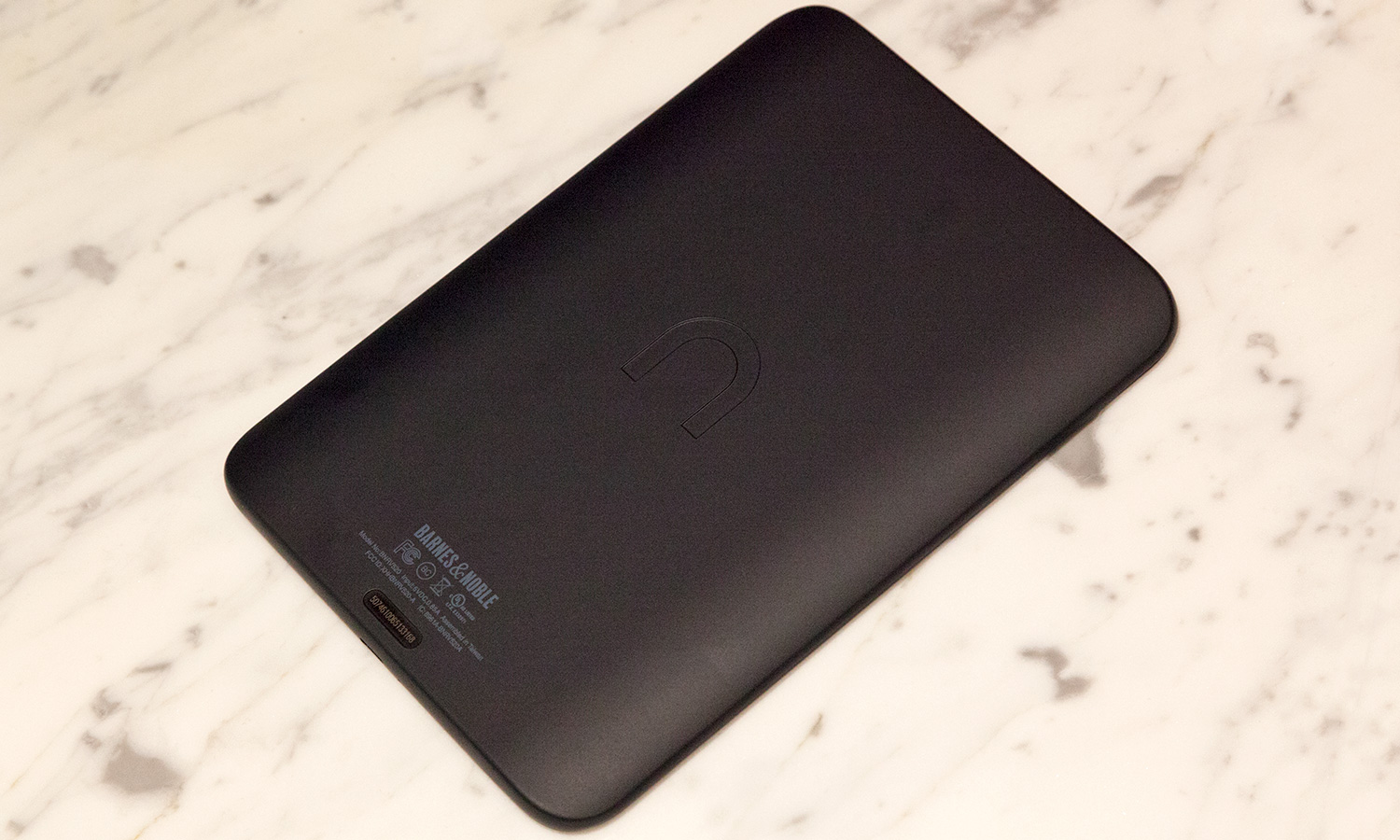
The biggest advantage of the GlowLight 3 over its GlowLight Plus predecessor is that it reintroduces physical page-turn buttons. There are two cylindrical buttons on each side of the device: one to turn pages forward, and one to turn them back. It may not seem like much, but these buttons are a lifesaver in situations when you can use only one hand to read, such as when you're holding a subway pole, or shoveling pita chips down your gullet.
Get instant access to breaking news, the hottest reviews, great deals and helpful tips.
Display
The GlowLight 3 features a 300-ppi screen, putting it on a par with both previous Nook models and current Kindle models. (Based on industry trends, there doesn't appear to be a huge advantage to cramming a higher resolution into a 6-inch E Ink screen.) This is comparable to what you'd find in a printed book, and the text will look crisp, clear and readable, no matter how big or small you make it, and no matter what font you use.
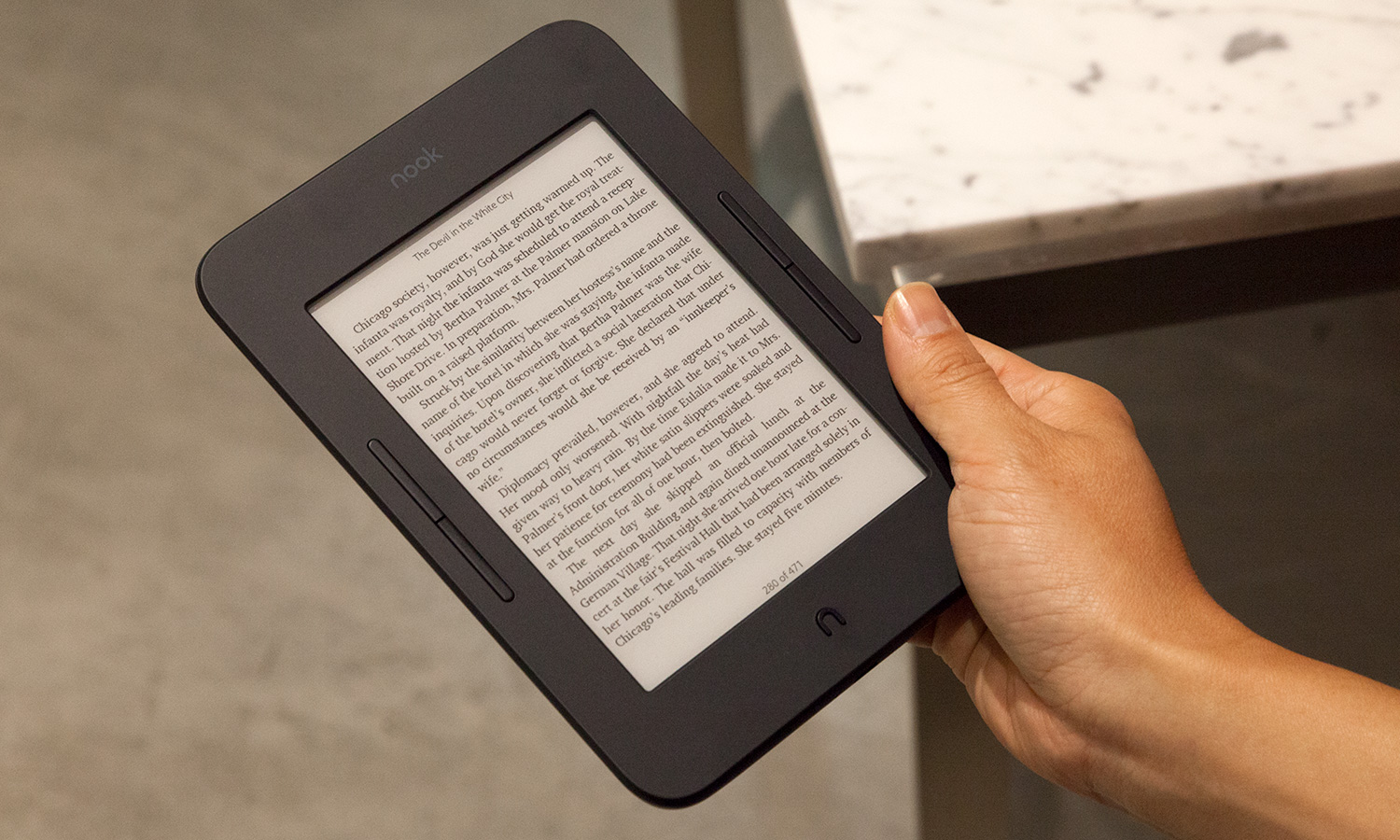
Speaking of text sizes and fonts, you'll have a fair variety of them on hand. There are six fonts to choose from; seven, if you count the publisher's default font for each book. Baskerville and Georgia are refined and showy; Malabar is a little bigger and brighter; Mundo Sans, Ascender Sans and Joanna Sans are, as you might imagine, sans-serif fonts that are easier to read for folks with poor eyesight or reading disorders.
While it's not a bad showing, the Kindle Paperwhite (at $120, the most comparable model to the GlowLight 3) offers 10 fonts, including the gorgeous Caecilia, which Nooks used to offer as well. Furthermore, you can install your own fonts on the Paperwhite with a simple workaround; on the GlowLight 3, you'd have to root it first.
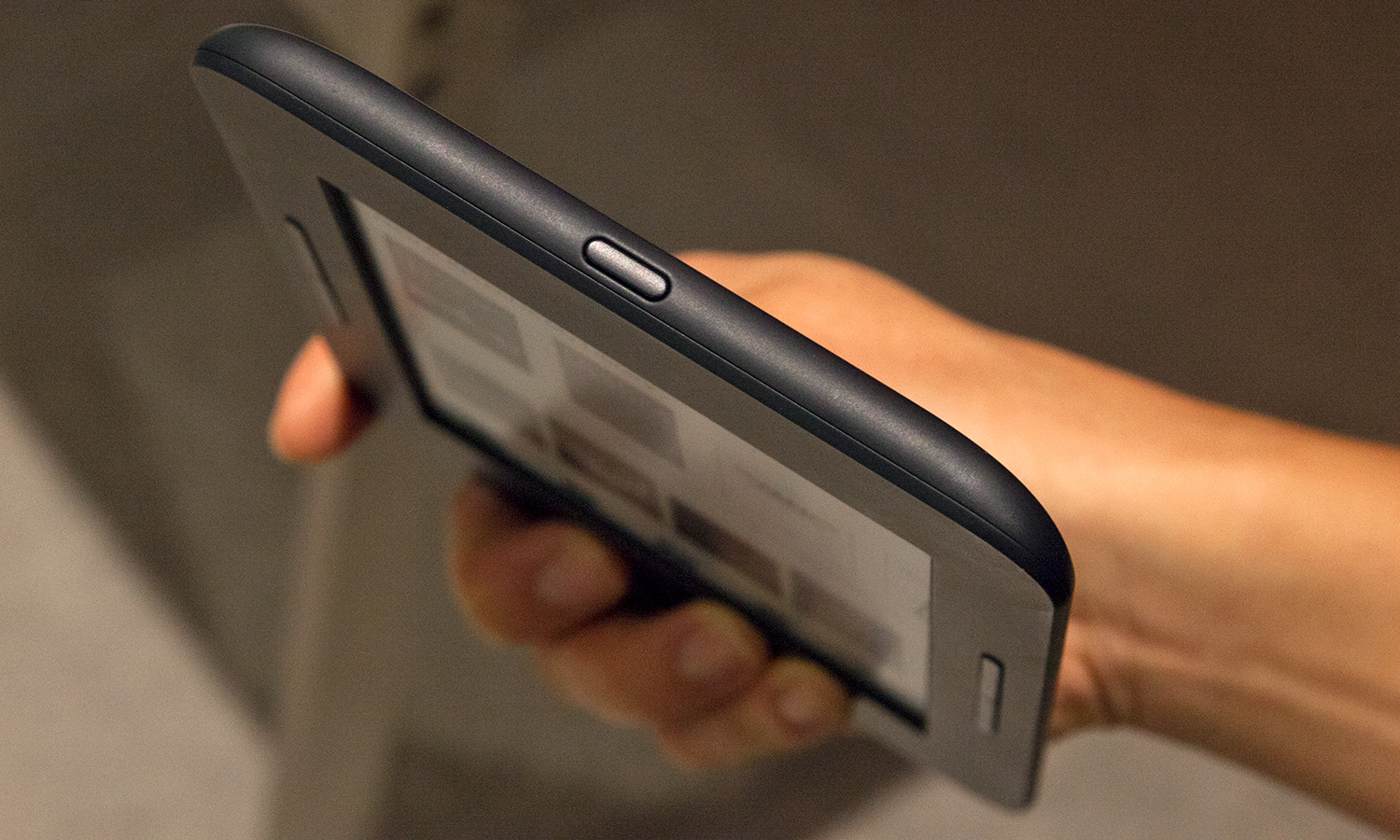
The GlowLight 3 is much better when it comes to font sizes and thickness, though. You can select Regular, Thin or Bold for each font, depending on whether your eyesight is extremely good or extremely lacking, and select from 10 sizes. The smallest size would put any fine print in a car contract to shame; the largest allows for only six or seven words per page.
Changing fonts and sizes isn't a seamless process, however. Each change takes a few seconds to register, and the screen flashes each time you reset. Text also scales up or down one size at a time; you can't simply jump from the smallest size to the largest as you could on older Nooks.
MORE: Best Kindles of 2018
GlowLight
Reading books on the GlowLight 3 is simple — when lighting conditions are ideal. When they're not (most of the time — unless your home, commute and favorite coffee shop are all evenly lit, all the time), you'll have to make use of the device's eponymous GlowLight. This built-in illumination is easily one of the e-reader's best features, although using it is a bit more cumbersome than it should be.
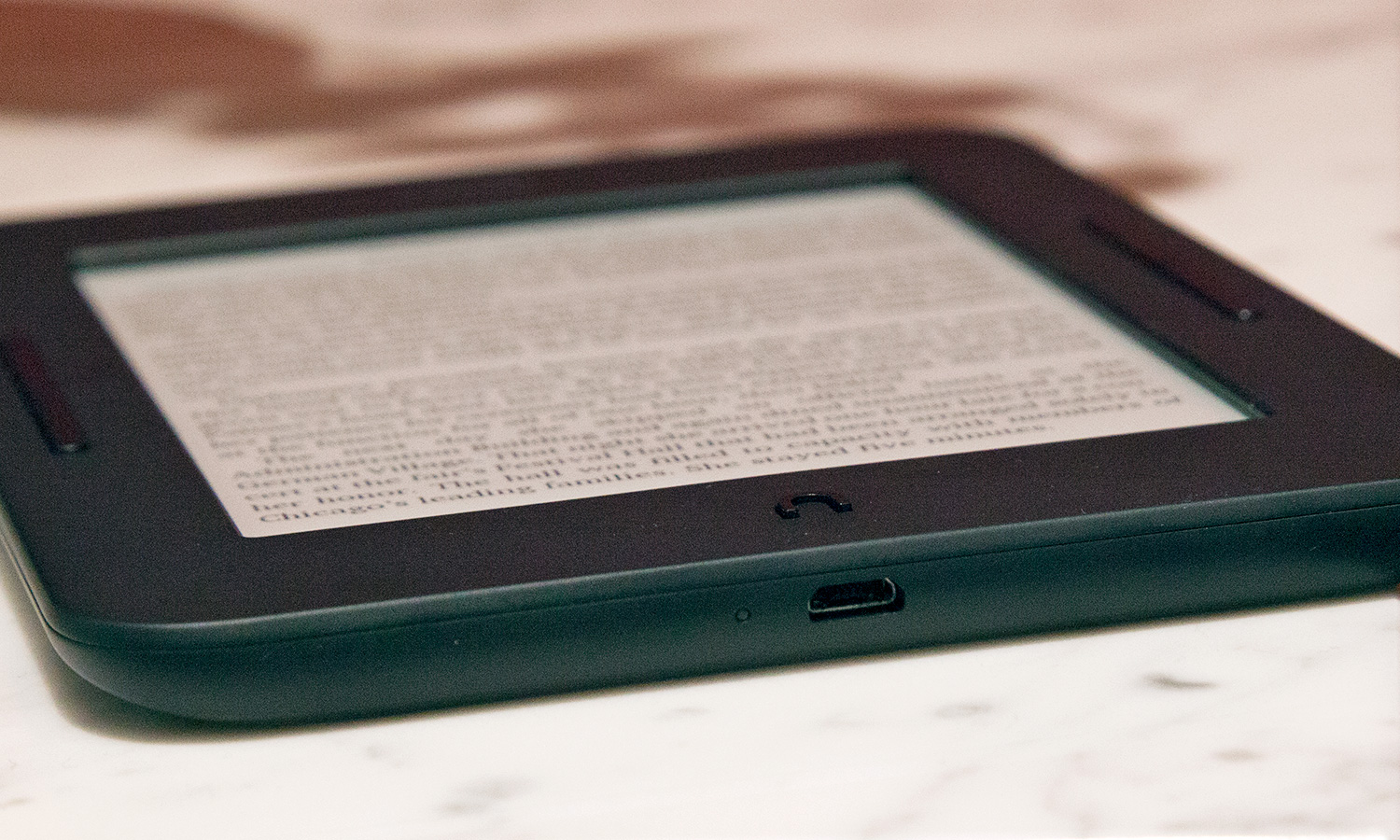
To activate or deactivate the GlowLight, you simply hold down the "n" button on the front of the device for 2 seconds. To manipulate it further, you can access the Quick Settings menu by tapping the upper-right corner of the screen.
From there, you can use a slider to determine just how much lighting you want. There seems to be about 20 different levels, but since there are no distinct notches, it could be more or fewer. This is one of my criticisms of the GlowLight functionality; it's easy to adjust, but if you find a spot you really like, you won't be able to get back there easily. You can approximate a lighting level you like, but you can't pinpoint or save it. There's also no way to adjust the light level automatically, like some higher-end Kindles offer.
The first thing you'll notice about the GlowLight 3 is that everything — books, menus, searches, the home screen, the shop and so forth — loads extremely slowly.
A cooler (pardon the pun) feature is the device's Night Mode. This lets you adjust the light with cooler blue hues for daytime reading, or warmer red ones for nighttime. You can even set the GlowLight 3 to automatically shift from blue to red as the day progresses. (There does seem to be some real science behind this.)
At first, I found the feature a little jarring. The deep-red light illuminating "The Devil in the White City" by Erik Larson at bedtime made me feel like I was going to sleep on Mars. However, I slept easily and well, and didn't feel my eyes getting tired as they would have with an LCD screen.
Interface
The first thing you'll notice about the GlowLight 3 is that everything — books, menus, searches, the home screen, the shop and so forth — loads extremely slowly. In fact, screens sometimes even load in stages, flashing the screen half a dozen times with obnoxious dots in the middle before finally settling on the thing you wanted to access.
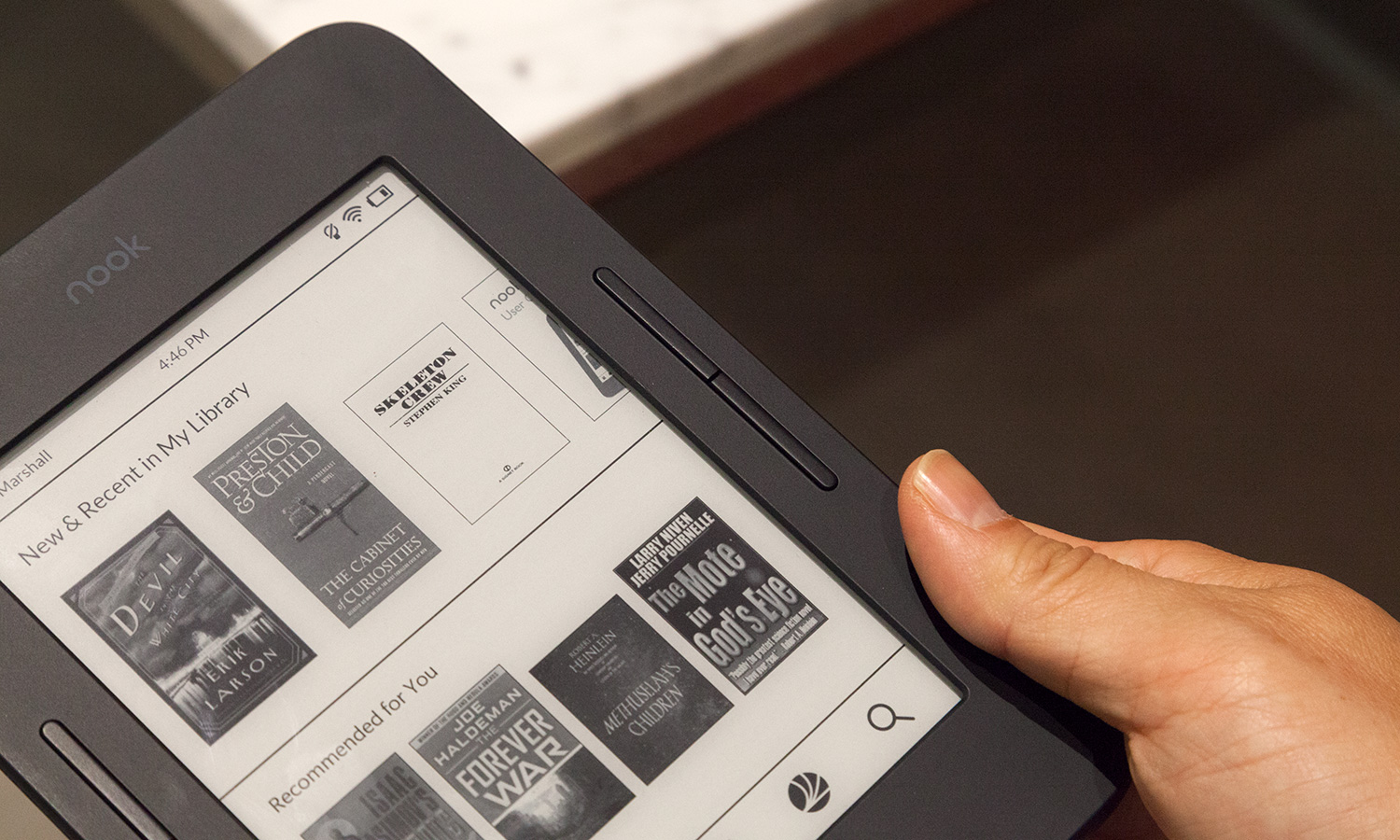
For the most part, the GlowLight 3 is navigable. The home screen shows you books you've recently read on top, and books that you might enjoy reading at the bottom. Sounds great — except the bottom list refreshes every time you return to the home screen, and the GlowLight 3 doesn't keep a list anywhere. If you don't save a book to your wish list, you may never see it again. Likewise, if you don't want what are essentially advertisements on your home screen, tough cookies; there's no way to turn it off.
(On top of everything else, the recommendations take a long time to load and make the screen flash, which seems to be a recurring theme.)
From there, you can load your Library, visit the Shop, return to your spot in whatever you're currently reading, explore B&N Readouts (excerpts from books you may enjoy) or do a Search, which can trawl both your library and the shop. The physical "n" button on the bottom of the device will always take you back to the home screen.
All of these features work pretty well, although it takes ages for anything to finish loading. Two obnoxious drawbacks rear their ugly heads almost immediately, though. There's no ever-present icon to return you to your current book, as previous Nooks offered, and you can't access Settings from the home menu. Instead, you have to tap the top-right corner and select See All Settings. This is where you can access options for Account, Storage, Screensavers and whatnot.
It's also where you can observe firsthand that just about everything about this device feels half-finished. You can choose between two screensavers, sure, but you can no longer add your own, as you used to be able to. You can choose a profile picture to go next to your name, but the picture won't actually show up on the home screen. (And you can't upload your own picture, naturally.) You can manage your 6GB of available storage, but you can't add a microSD card anymore. In your account settings, you get the option to log out of Facebook, but no option to log in; that you have to do from within a book, when you try to share a quote. (The quote-sharing is also not formatted well, but at least it technically works.)
What's bizarre about these omissions is that the Nook used to offer so much more. It had a headphone jack and let you upload MP3s, so you could listen to music while you read. There was a microSD card slot. You could choose your own backgrounds and screensavers, use a simple web browser, download books over a 3G network, see recommendations from friends and even play a round of chess. Granted, not all of these features were necessary, and removing some of them has streamlined the product. Others, though, feel like cost-cutting measures — even though the GlowLight 3 is about the same price as previous models.
In fact, as recently as the GlowLight Plus, the Nook featured water resistance, a bezel-less screen and 8GB of storage. Aside from the buttons (which, I should reiterate, are welcome additions, and much better than the buttons on either the original Nook or the Nook Simple Touch), everything about the GlowLight 3 feels like a step backward.
MORE: Best Tablets 2018
Battery Life
Barnes & Noble claims that the GlowLight 3 can last for up to 50 days on a single charge — under very specific conditions, that is. The "50 days" claim assumes lighting at 10 percent (this is too dark for most areas), Wi-Fi disconnected (you can't buy new books) and turning one page per minute (you'll turn more frequently if you have bigger text).
That doesn't mean the battery life isn't up to snuff, however. Throughout two days of heavy testing — turning the lights on and off, poking and prodding every menu, restarting constantly, reading for hours — I was able to drain the battery by about 20 percent. That means that with extremely heavy use, you could still use the GlowLight 3 for 10 days without having to recharge it. Assuming you buy a few books you want to read, turn off the Wi-Fi and shut off the GlowLight in well-lit areas, you could probably get 20 or 30 days out of it.
The device takes about 3 hours to charge, and you can use it while it's charging, so running out of battery shouldn't ever be a problem. Still, the GlowLight 3 doesn't come with a wall adapter, whereas previous models did.
Content
Barnes & Noble estimates that it sells 4.5 million Nook books. By contrast, there are about 4 million books available for the Kindle. Raw numbers, however, aren't a great way to compare selections. In fact, comparing the two stores head-to-head isn't easy, since both have different blind spots.
If your tastes skew modern and you want to read whatever's on The New York Times Bestsellers list, you'll be able to find what you're looking for on the Barnes & Noble website without issue. But there are some strange absences if you prefer more esoteric titles. There's no James Bond (in English, anyway); a number of Arthur C. Clarke classics are missing; Stephen King's Kindle-exclusive "Ur" is still, well, Kindle-exclusive.
Because there's no great way to compare Barnes & Noble's selection to Amazon's directly, I'll just say that in my personal experience, neither store has every single e-book that I want to read. But if there's ever a book that's not available on both platforms, it's always Amazon that has it and Barnes & Noble that doesn't.
The Nook's shop feature is likewise functional. You can search by title or author, or browse a number of categories, just as you would in a physical bookstore. There are occasional sales or free books. As long as Barnes & Noble carries the book you want, it's not hard to find it.
One area in which the GlowLight 3 fails spectacularly, however, is in its compatibility with library books. Back when the Nook was new, borrowing e-books from a library was a privilege that the Kindle could not claim. Times have changed, however, and now Kindles can borrow library books with ease, while doing so on the Nook is somehow even more cumbersome than before.
If you want to take out a library book for a Kindle, you simply select the book you want, then click a button to send it to your Amazon library. You can then download it wirelessly on your device. Compare and contrast:
On a GlowLight 3, you have to register your device with your Adobe ID, download Adobe Digital Editions (ADE) onto your computer, download the library book, register it with ADE, connect your Nook to your computer, ensure that ADE recognizes the e-reader, copy the book onto the device and safely eject the hardware. If you're extremely, extremely lucky, the process will even work.
I was not extremely, extremely lucky. My copy of "The Cabinet of Curiosities," by Douglas Preston and Lincoln Child, failed to load, because it required a "loan token authorization." An online search informed me that Barnes & Noble blames Adobe for this problem, while Adobe blames Barnes & Noble. Online threads suggest that it'll just work, eventually, if you keep trying.
To be fair, it did. When I tried to load a library copy of "Skeleton Crew," by Stephen King, both library books miraculously started working perfectly. I don't know why the process didn't work before that. I just hope that it continues working until I finish reading both.
Accessories
Compared to what Barnes & Noble offered for previous Nooks, the accessory selection is downright anemic. You can choose from 14 covers (identical physical designs, different colors or pictures), a few stands and a couple of power adapters.
At $20 apiece, the covers are reasonably priced, but if you don't want your Nook to look like an oversize Moleskine notebook, you're out of luck. Previous Nook models offered covers in not only different colors, but different styles as well (neoprene skins, leather pouches, simple gray book-style covers, fancy options from designers like Kate Spade, etc.).
Bottom Line
The GlowLight 3 offers only one new thing (the admittedly cool Night Mode) while eschewing lots of useful features from previous versions. It's a lazy, half-hearted, confusing gadget, coasting on goodwill and hoping that its core competence will prevent readers from noticing how convoluted it feels for everything but actually turning from page to page.
The Nook GlowLight 3 also raises a larger question: Is the E Ink reader nearing the end of its life span? While E Ink readers offer undeniable benefits over smartphones and tablets for even casual bibliophiles (reduced eyestrain, better battery life, a more book-like appearance), the ubiquity of LCD devices is hard to resist. An E Ink reader has to be spectacular to stand out in today's market, and the latest Nook is not only mediocre but seems perfectly satisfied with its own mediocrity.
There are still a number of good Kindles out there if you're looking for an e-reader, but it's sad to see a single company nearly cornering a market. If the age of E Ink readers is really coming to a close, the GlowLight 3 seems content to let it go with a whimper instead of a bang.
Credit: Shaun Lucas/Tom's Guide

Marshall Honorof was a senior editor for Tom's Guide, overseeing the site's coverage of gaming hardware and software. He comes from a science writing background, having studied paleomammalogy, biological anthropology, and the history of science and technology. After hours, you can find him practicing taekwondo or doing deep dives on classic sci-fi.
